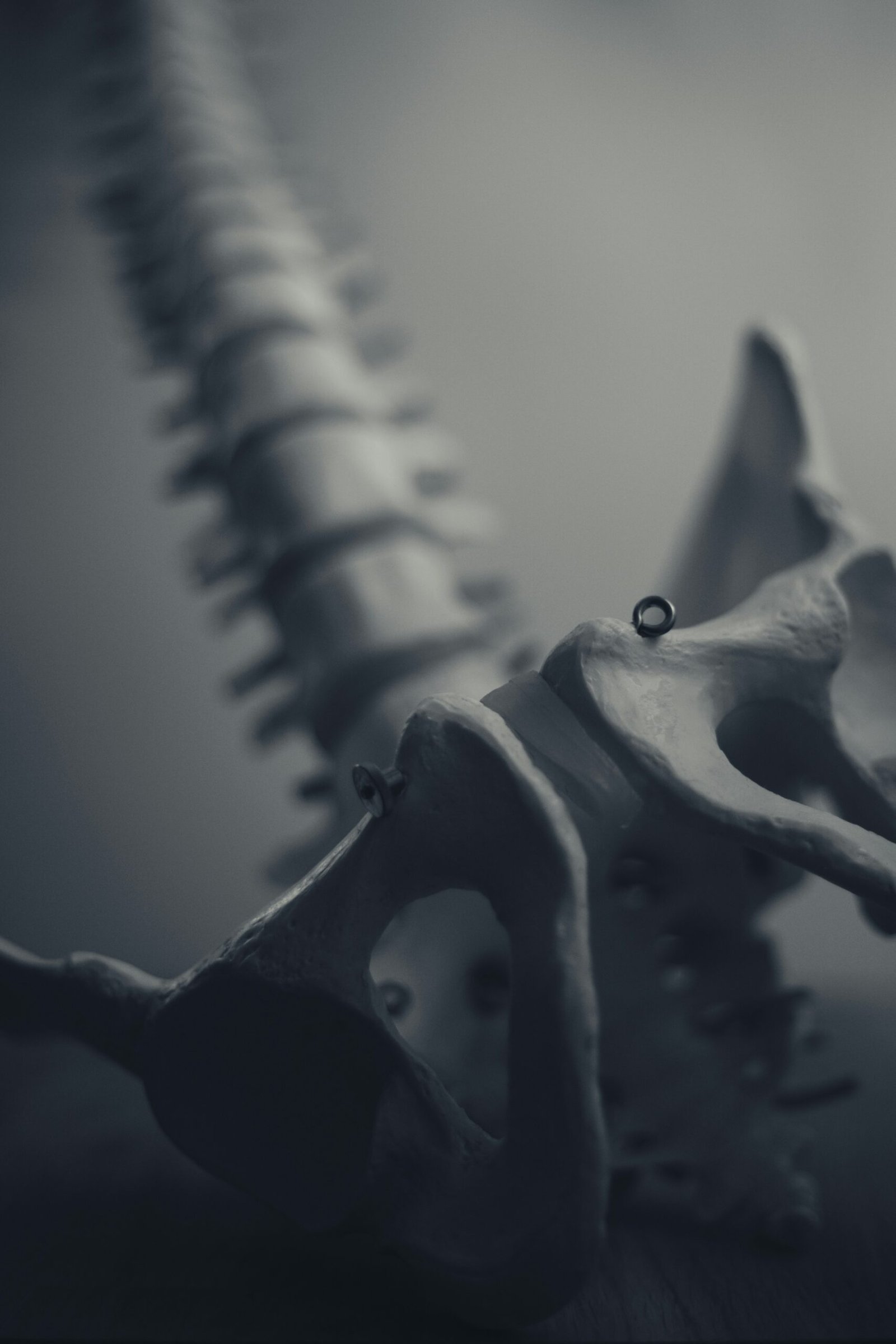Imagine this: you're a dedicated runner, lacing up your shoes every morning for an invigorating jog. But as the miles start to add up, you begin to feel a throbbing pain in your foot that just won't go away. Could this be a stress fracture, and could it eventually lead to the excruciating condition known as gout? In this article, we will explore the link between stress fractures and gout, shedding light on the potential risks and offering helpful tips to keep you on your feet and pain-free. So, grab a cup of tea and get ready to uncover the truth behind this intriguing connection.
Understanding Stress Fractures
Stress fractures are small cracks or breaks in the bones that are caused by overuse and repetitive stress. Unlike a normal fracture that occurs as a result of a single traumatic event, stress fractures develop over time due to the cumulative strain on the bones. They are most commonly seen in weight-bearing bones such as the feet, ankles, shins, and hips.
Common Causes of Stress Fractures
Stress fractures can occur as a result of various factors. Some common causes include sudden increase in physical activity, repetitive impact from activities like running or jumping, improper footwear, poor biomechanics, and inadequate rest and recovery time between intense workouts. Athletes, especially those participating in high-impact sports, are particularly susceptible to stress fractures.
Differentiating Between Normal Fractures and Stress Fractures
It is important to differentiate between normal fractures and stress fractures in order to ensure appropriate treatment. Unlike a normal fracture, stress fractures often present with a gradual onset of pain that worsens with activity and improves with rest. X-rays may not always reveal stress fractures, especially in the early stages, so other diagnostic methods such as magnetic resonance imaging (MRI) may be more effective in detecting these injuries.
Implication of Untreated Stress Fractures
Untreated stress fractures can lead to serious complications. If left untreated, stress fractures can progress to complete fractures that require more invasive treatments, such as surgery or immobilization. Additionally, untreated stress fractures can weaken the affected bone, increasing the risk of future fractures. In some cases, untreated stress fractures can also contribute to the development of other conditions, such as gout.
Concept of Repeated Trauma and Stress Fractures
The concept of repeated trauma plays a significant role in the development of stress fractures. Repetitive strain and microtrauma from activities that involve repetitive impact or excessive loading can lead to the formation of small cracks in the bone. Over time, these cracks can weaken the bone and eventually result in stress fractures. This repeated trauma can also have implications for other parts of the body, including the joints, which may contribute to the development of conditions like gout.
Breaking Down Gout
Gout is a type of arthritis that is characterized by severe pain, redness, swelling, and tenderness in the joints. It is caused by the buildup of uric acid crystals in the joints, which leads to inflammation and intense pain. Gout most commonly affects the big toe, but it can also occur in the ankles, knees, hands, and other joints.
Role of Uric Acid in Gout
Uric acid is a waste product that is produced when the body breaks down purines, substances found naturally in the body and in certain foods. Normally, the kidneys filter out uric acid and it is excreted through urine. However, in individuals with gout, either the body produces too much uric acid or the kidneys are unable to effectively eliminate it. The excess uric acid can then crystallize in the joints, leading to gout.
Lifestyle Factors Contributing to Gout
Certain lifestyle factors can contribute to the development of gout. These include a diet high in purine-rich foods such as red meat, organ meats, seafood, and alcohol. Obesity, high blood pressure, diabetes, and kidney disease are also risk factors for gout. Additionally, certain medications, such as diuretics, can increase the levels of uric acid in the body and contribute to gout.
Typical Symptoms of Gout
The symptoms of gout often come on suddenly and can be extremely painful. Common symptoms include severe joint pain, swelling, redness, and tenderness in the affected joint. The pain is often described as sharp and excruciating, and it can be difficult to even touch or move the affected joint. Gout attacks typically occur at night and can last for several days or weeks.
The Connection Between Gout and Arthritis
Gout is a form of arthritis, which is a broad term that refers to inflammation of the joints. While gout is a specific type of arthritis, characterized by the accumulation of uric acid crystals in the joints, it shares similarities with other types of arthritis. Both gout and other forms of arthritis can cause joint pain, stiffness, and swelling. However, the underlying causes and treatments for each type of arthritis can vary.

Investigating the Connection Between Stress Fractures and Gout
There is ongoing research investigating the potential link between stress fractures and gout. While stress fractures and gout are two distinct conditions, there may be a connection between the two, particularly in certain situations. Understanding the relationship between stress fractures and gout can provide valuable insights into the prevention and treatment of both conditions.
A Case Study of Stress Fractures Leading to Gout
In a selected case study, a patient with a history of stress fractures developed gout after experiencing multiple stress fractures in their lower limbs. The repetitive strain and trauma to the bones from the stress fractures may have triggered an inflammatory response, leading to the activation of gout. This case serves as an example of the potential link between stress fractures and the development of gout.
Opinions from Medical Practitioners on Potential Link
Medical practitioners have varying opinions on the potential link between stress fractures and gout. Some believe that the inflammation caused by stress fractures can contribute to the activation of gout, while others suggest that the connection may be coincidental. Further research is needed to establish a definitive link between the two conditions and understand the mechanisms behind it.
Situational Cases Where Stress Fractures Could Potentially Exacerbate Gout Symptoms
In certain situational cases, stress fractures could potentially exacerbate gout symptoms. For example, if a person with gout experiences a stress fracture in a weight-bearing joint, such as the foot or ankle, the added strain and trauma from the stress fracture may worsen the inflammation and pain associated with gout. These scenarios highlight the importance of promptly addressing both conditions to prevent further complications.
Risk Factors Common Between Gout and Stress Fractures
There are several risk factors that are common between gout and stress fractures. These include obesity, a sedentary lifestyle, improper nutrition, certain medications, and certain medical conditions such as diabetes and kidney disease. Additionally, individuals who frequently engage in high-impact activities may be at a higher risk for both stress fractures and gout due to the repeated strain on the bones and joints.
Demographics Most at Risk of Stress Fractures and Gout
While stress fractures and gout can affect individuals of any age and gender, certain demographics are more susceptible to these conditions. Athletes, especially those involved in sports that involve repetitive impact or excessive loading, are at a higher risk for stress fractures. On the other hand, gout tends to affect middle-aged and older individuals, and it is more commonly seen in men than women.
Role of Genetics in Stress Fractures and Gout
Genetics can play a role in the development of both stress fractures and gout. Certain genetic factors may predispose individuals to have weaker bones that are more prone to stress fractures. Likewise, there may be genetic variations that contribute to an individual's ability to metabolize uric acid, increasing their risk of developing gout. Further research is needed to fully understand the genetic factors involved in these conditions.
Preventing Stress Fractures
Preventing stress fractures involves various strategies, including proper nutrition, appropriate exercise, adequate rest, and the use of safety equipment. Maintaining a balanced diet that includes foods rich in calcium and vitamin D can help promote strong bones. Gradually increasing exercise intensity and using supportive footwear can reduce the risk of stress fractures. Additionally, incorporating rest days into your training schedule allows for proper recovery and helps prevent overuse injuries.
Role of Diet in Prevention
A diet rich in calcium and vitamin D is crucial for preventing stress fractures. Calcium is essential for bone health, and vitamin D helps with the absorption of calcium in the body. Good sources of calcium include dairy products, leafy greens, and fortified foods. Vitamin D can be obtained through sun exposure and foods such as fatty fish, egg yolks, and fortified products. Ensuring an adequate intake of these nutrients can help strengthen bones and reduce the risk of stress fractures.
Exercise and Fracture Prevention
Regular exercise is important for maintaining overall bone health and preventing stress fractures. Engaging in weight-bearing exercises, such as walking or dancing, helps strengthen bones and improve bone density. Incorporating resistance training exercises, such as lifting weights, can also promote bone strength. It is important to gradually increase the intensity and duration of exercise to avoid overloading the bones, which can increase the risk of stress fractures.

Interplay Between Rest and Stress Fractures
Rest plays a crucial role in the prevention of stress fractures. Giving your body adequate time to recover and repair itself after intense physical activity helps prevent overuse injuries. It is important to listen to your body and take rest days when needed. Alternating between low-impact and high-impact activities can also help reduce the risk of stress fractures by allowing the bones and joints to recover from repetitive strain.
Safety Equipment and Stress Fracture Avoidance
Wearing appropriate safety equipment can help reduce the risk of stress fractures. For activities that involve impact or repetitive loading, such as running or jumping, it is important to use supportive footwear that provides cushioning and shock absorption. In sports that require repetitive motion, such as tennis or basketball, using proper technique and equipment, such as protective padding or braces, can help prevent stress fractures.
Preventing Gout
Preventing gout involves making certain lifestyle changes and seeking appropriate medical treatment. The primary focus is on managing uric acid levels in the body and reducing inflammation in the joints.
Dietary Changes to Prevent Gout Attacks
Making dietary changes is an important aspect of preventing gout attacks. Avoiding or limiting foods high in purines, such as red meats, organ meats, seafood, and alcohol, can help reduce the production of uric acid in the body. Instead, incorporating low-purine foods, such as fruits, vegetables, whole grains, and low-fat dairy products, can help maintain lower uric acid levels.
Medication and Gout Prevention
In some cases, medication may be prescribed to prevent gout attacks. Medications such as allopurinol or febuxostat help lower uric acid levels in the body, reducing the risk of crystal formation and gout attacks. Nonsteroidal anti-inflammatory drugs (NSAIDs) may also be prescribed to manage pain and reduce inflammation during acute gout attacks.
Role of Hydration in Gout Prevention
Staying hydrated is important for preventing gout attacks. Drinking an adequate amount of water helps dilute uric acid in the body and promotes its excretion through urine. It is recommended to drink at least 8 cups (64 ounces) of water per day. Additionally, avoiding sugary beverages, including fruit juices and soft drinks, can help minimize the production of uric acid in the body.
Importance of Regular Doctor Check-ups
Regular check-ups with a healthcare professional are important for managing and preventing gout. These appointments allow for monitoring of uric acid levels and assessment of overall health. Through regular check-ups, the doctor can adjust medication dosages, provide guidance on dietary changes, and address any concerns or questions the patient may have.
Treatment Options for Stress Fractures
The treatment options for stress fractures depend on the severity and location of the fracture. In most cases, stress fractures can be treated conservatively without the need for surgery.
Conservative vs. Surgical Approaches
Conservative treatment options for stress fractures include rest, immobilization with a cast or brace, pain management, and physical therapy. Resting the affected limb is crucial to allow the bone to heal. Immobilization with a cast or brace may be necessary for certain fractures to prevent further damage and promote proper healing. Surgical intervention is typically reserved for severe cases or fractures that do not respond to conservative treatment.
Pain Management for Stress Fractures
Pain management for stress fractures typically involves over-the-counter pain relievers, such as acetaminophen or nonsteroidal anti-inflammatory drugs (NSAIDs). These medications can help alleviate pain and reduce inflammation. However, it is important to consult with a healthcare professional before taking any medications to ensure proper dosing and to check for any potential interactions with other medications.

Role of Physical Therapy in Recovery
Physical therapy plays a vital role in the recovery and rehabilitation process of stress fractures. A physical therapist will develop a personalized exercise program that focuses on strengthening the surrounding muscles, improving flexibility, and gradually reintroducing weight-bearing activities. Physical therapy also helps improve balance and coordination, reducing the risk of future injuries.
Expected Recovery Timeline
The recovery timeline for stress fractures varies depending on the location and severity of the fracture, as well as individual factors such as age and overall health. In general, it can take several weeks to several months for a stress fracture to heal completely. During this time, it is important to follow all treatment recommendations, including rest, immobilization, and physical therapy, to ensure proper healing and minimize the risk of complications.
Treatment Options for Gout
The treatment options for gout are aimed at reducing inflammation, managing pain, and preventing future gout attacks.
Medical Treatments for Gout
Medical treatments for gout include medications to reduce pain, decrease inflammation, and lower uric acid levels. Nonsteroidal anti-inflammatory drugs (NSAIDs), colchicine, and corticosteroids are commonly prescribed to manage acute gout attacks. Medications such as allopurinol and febuxostat are used to lower uric acid levels and prevent future gout attacks.
Home Remedies for Gout
In addition to medical treatments, certain home remedies may help manage gout symptoms. Applying ice packs to the affected joint can help reduce swelling and alleviate pain. Resting the joint and keeping it elevated can also help relieve discomfort. Drinking plenty of water and consuming cherry juice or tart cherries may help reduce uric acid levels and inflammation.
Long-Term Management of Gout
Long-term management of gout involves lifestyle modifications and ongoing medical treatment. This may include following a low-purine diet, maintaining a healthy weight, exercising regularly, and avoiding trigger foods and beverages. It is important to work closely with a healthcare professional to monitor uric acid levels, adjust medication dosages if needed, and make necessary lifestyle changes to prevent future gout attacks.
Managing Gout Flare-Ups
Gout flare-ups can be managed with a combination of medication and self-care strategies. Resting the affected joint, applying ice packs, and taking over-the-counter pain relievers can help alleviate symptoms during an acute attack. It is also important to continue taking prescribed medications as directed and follow any additional recommendations provided by the healthcare professional.
Living with Stress Fractures and Gout
Living with stress fractures and gout can be challenging, but with proper management and support, individuals can maintain a good quality of life.
Day-to-Day Management of Stress Fractures
Day-to-day management of stress fractures involves following the recommended treatment plan, including rest, immobilization if necessary, and any prescribed pain medications. Additionally, it is important to follow the guidance of a healthcare professional or physical therapist regarding exercise modification and rehabilitation exercises. Gradually returning to activities and incorporating cross-training can help prevent future stress fractures.
Coping with a Gout Diagnosis
Coping with a gout diagnosis can be emotionally challenging, as it may require significant lifestyle changes to manage the condition effectively. It can be helpful to seek support from loved ones, join support groups, or speak with a mental health professional. Following the prescribed treatment plan and attending regular check-ups can provide reassurance and help prevent future gout attacks.
Support Networks Available
Various support networks are available for individuals living with stress fractures and gout. Support groups, both in-person and online, provide opportunities to connect with others facing similar challenges, share experiences, and exchange advice. Healthcare professionals, including physical therapists and rheumatologists, can also provide support and guidance throughout the treatment and management process.
Downsides of Ignoring Symptoms
Ignoring symptoms of stress fractures and gout can lead to further complications and prolonged healing times. Untreated stress fractures can progress to more severe fractures that may require surgery and extend the recovery period. Untreated gout may result in frequent and debilitating flare-ups, joint damage, and the development of tophi, which are deposits of uric acid crystals under the skin. It is important to seek medical attention promptly to prevent these complications.
Future Research and Developments
There are ongoing research efforts focusing on further understanding the connection between stress fractures and gout and developing new treatment approaches.
Current Gaps in Understanding the Connection Between Stress Fractures and Gout
While there is evidence suggesting a potential link between stress fractures and gout, there are still gaps in understanding the exact mechanisms and pathways involved in this relationship. Further research is needed to elucidate the underlying biological processes and determine the extent of the connection between the two conditions.
Ongoing Research into Stress Fractures and Gout
Researchers are actively studying stress fractures and gout to advance our knowledge in the field. Ongoing studies are exploring the impact of repetitive strain on uric acid metabolism and gout development. Additionally, investigations are being conducted to identify potential biomarkers and develop targeted therapies for both stress fractures and gout.
Potential Future Treatments for Stress Fractures and Gout
As research progresses, potential future treatments for stress fractures and gout may emerge. These could include novel medications that target specific pathways involved in bone healing and uric acid regulation. Advances in regenerative medicine and tissue engineering may also offer promising strategies for accelerating bone healing and preventing long-term complications of stress fractures. The development of personalized treatment approaches based on individual genetic and metabolic factors is another exciting area of research in the field of gout.
